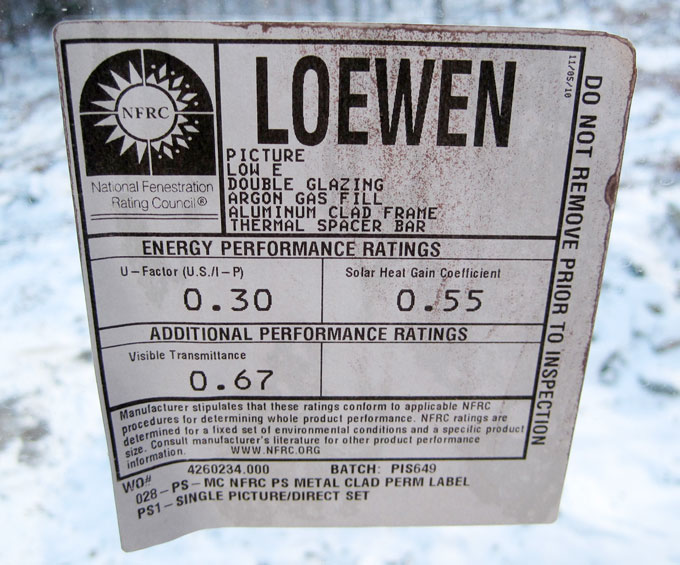
Image Credit: Kirstin Edelglass
Have you ever found yourself picking a sticker off a building product or material from the store, and wondering, why did they put the sticker here? I have often had this thought with everything from stovepipe to plumbing fittings, but the classic example in the building world is probably windows.
The glass part of the window is for looking through, right? Then why does every window manufacturer put two or three large stickers right in that area? Sometimes these come off easily — sometimes they are a real pain to remove. Sometimes they don’t come off at all: I have seen window stickers, or remnants of them, still in place years after construction.
The next time you encounter one of those stickers — in your house, on the construction site, or at the showroom — take a close look. The different values that appear on them can mean a world of difference in terms of how those windows will perform in your building.
NFRC gives us apples-to-apples comparisons
To enable apples-to-apples comparisons among windows, industry leaders formed the National Fenestration Rating Council (NFRC) in 1989 to create standard metrics for comparing performance of windows. NFRC has set the format for those stickers for most of the time since then. It gives us four main numbers to pay attention to.
First is U-factor. Americans have gotten pretty comfortable with R-value, used to measure insulation, so it’s a little unfortunate that we have to learn a new metric for windows, that is basically measuring the same thing. R-value measures resistance to heat flow; U-factor is the mathematical inverse (1 divided by R-value gives you U-factor), and measures the rate of that heat flow.
In a cold climate a good U-factor for a window is between 0.17 and 0.39. (That’s between R-6 and R-2.5). Lower is better with U-factor — the opposite of R-value, when higher is better. The low end of that range is only achievable with higher-quality triple-glazed windows — windows with three layers of glass. These are worth considering for high-performance houses, but they do cost more.
In a hot climate, the only difference with U-factor is that it’s better to look for an even lower figure, for reasons I’ll explain in a minute. I would look for a U-factor range in a hot climate of between 0.17 and 0.30, and again, lower is better.
Letting in solar heat — or not
The next key number is solar heat gain coefficient (SHGC). This is a number between 0 and 1, and it compares amount of solar heat that reaches the window with the amount that gets through to the inside. In a hot climate, or in a cold climate on west-facing windows with rooms that tend to overheat in low-angle afternoon sun, less solar heat gain is generally good, and this number should be low.
In cold climates on south-facing walls, a higher solar-heat-gain number is better — this supports “passive solar” heating. In this situation, an SHGC value of 0.42 to 0.63 is desirable, and higher is better. (In hot climates, look for values as low as 0.25.)
Unfortunately, due to the different low-e coatings used, higher SHGC values generally also come with somewhat higher U-factors. In other words, to get more solar heat gain you have to give up some insulation value. That’s okay, but usually is only worth doing on south-facing walls. On north-facing walls, you want the lowest U-factor possible.
“Southern” windows may not work well up north
To further complicate matters, most windows made in the U.S. cater to the larger southern market, where both low U-factor and low SHGC are sought after. Window stickers in the Northeast attest to the fact that a lot of homes are stuck with windows that don’t match their “passive solar” designs: they insulate well, but they reject too much solar heat.
The “30/30” rule is common: U-factors of under 0.30 (which is good) are often paired with SHGCs of under 0.30. That’s a good target for the South. For colder climates, I would propose for discussion a “30/40” rule.
Pella, Marvin, and other major U.S. companies are increasingly offering products sensitive to northern buyers, but I have seen a number of area homeowners buy windows from Canadian companies, which are generally ahead of the game.
If you’re in the South, then good news — most windows that are for sale already cater to your needs. Just look for the highest-performers possible.
When is a window not a window?
We install windows to let in light and enjoy the outdoors, so it’s important that we don’t lose sight of this in our search for highly insulating windows. A third number on that sticker, visible transmittance (VT), is a value from 0 to 1 that indicates the amount of visible light that makes it through, taking into consideration light blocked by the frame and muntins.
Most double- and triple-glazed windows have VT values between 0.30 and 0.70. Higher VT is desirable, but lower VT values are often delivered along with lower U-factors. If you get a really high-performing window, beware of VT values less than 0.40. Below that point, your view may start to have a grayish cast.
The missing number: air leakage
Tiny cracks in the window assembly can add up to significant heat loss and gain, so it’s worth looking for air leakage numbers. NFRC labels sometimes provide an air leakage rating (AL), although it is not required, and manufacturers often omit it. AL is expressed as cubic feet of air passing through a square foot of window area. The lower the AL, the less air will pass through cracks in the window assembly. Select windows with an AL of 0.30 or less. Lower is better.
For a full discussion of how to find the best windows, check out Choosing Windows: Looking Through the Options, in Environmental Building News.
Tristan Roberts is Editorial Director at BuildingGreen, Inc.
Weekly Newsletter
Get building science and energy efficiency advice, plus special offers, in your inbox.





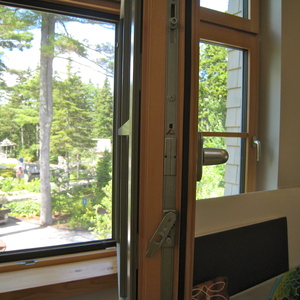
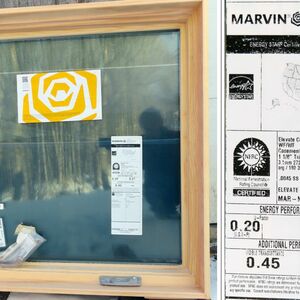
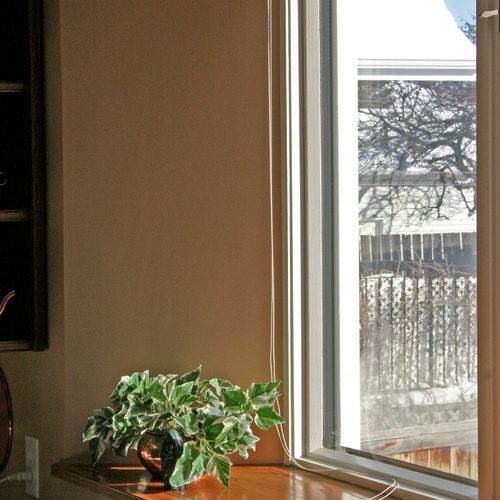
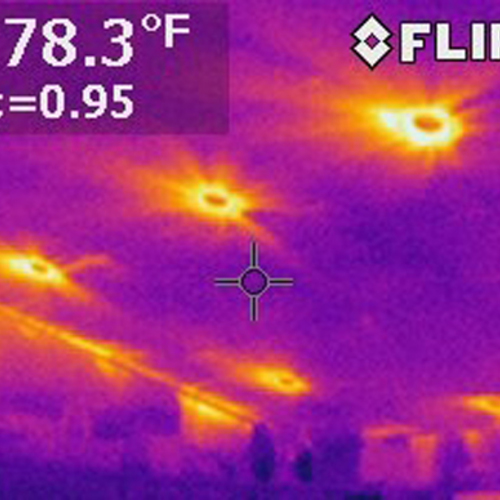






15 Comments
Southern U-factors
Tristan,
You wrote, "In a hot climate, the only difference with U-factor is that it's better to look for an even lower figure" -- presumably, you mean even lower than the U-factor you look for in a cold climate.
Why? Hot climates experience a lower delta-T than cold climates. That's why the conventional wisdom calls for lower U-factors (higher R-values) up north than down south.
reply to Martin
Martin, good point -- that wasn't very clear. What I meant to say was that southern buyers can look for a lower value for the upper range of the U-factor recommendations, since they don't have the SHGC/U-factor tradeoff to contend with. I recommend looking for U-factor as low as 0.17 in all climates, but in northern climates, 0.39 isn't bad, if coupled with a high SHGC. In a southern climate I wouldn't tolerate a U-factor that high.
Makes sense?
Response to Tristan
Tristan,
Now I understand your point -- but I'm not sure I agree.
It's hard to imagine a southern builder specifying a triple-glazed window with a U-factor of 0.17. That's an expensive window, and the significant incremental cost would probably be better spent elsewhere.
In New Orleans, several Passivhaus designers recently proved that a Passivhaus building doesn't need triple glazing down South. Double glazing still gets you to Passivhaus in Louisiana.
response to Martin
Martin, you again make a good point, which I am not going to argue against. My intent in providing that range was to give people a nice, wide—but clearly delineated—target to aim for. Perhaps the lower end of the target is really too low to be practical, but on the other hand, there are windows with even lower U-factors, and I'm not recommending those. That may be helpful advice for someone who wants to rule some windows out.
In short, I think that recommending "lower than 0.30" for southerners is too vague. What do you think is a good lower threshold for such a recommendation?
NFRC shortcomings
I am always happy to keep reading about window and glazing selection, as I'm continually re-reading product performance data and NFRC results. NFRC provides a fairly level field upon which to compare products, but it drives me nuts that NRFC still shows "total product" SHGC and VT, which include the frame. There is ZERO VT and ZERO SHGC in the frame of a window, so these numbers should be glazing unit only, but that data can be hard to find from the different manufacturers. Without it, it becomes very hard to guess at the relative change in comparable SHGC or VT with thicker vs thinner frames, even if you are comparing same size units.
On a different note, I have to take issue with Tristan's comment that in a northern climate U-factor 0.39 "isn't bad" if coupled with a high SHGC. I think that is too simplistic for three essential reasons. First, in a very cold climate such as here in northern MN, at temps below zero F, we often see significant condensation on windows with U greater than 0.3 unless the interior RH is kept below 20%. Second, the trick in solar gain in a cold climate is not to lose more at night than you gain during the day, so a high SHGC only really saves energy (i.e. functions as passive solar) when the U-value is such that the overall loss is less than the overall gain (PHPP does a nice job of showing this during design calculations). And third, as Martin has written as well, once a wall assembly gets super-insulated, the windows should come along in thermal performance, so while a U-0.3 might be acceptable in an R-21 wall, it will affect comfort and durability differently in an R-36 or R-50 wall.
response to Rachel
Rachel, great comment and points. Part of what I was trying to do with this article was put out a general recommendation of what to look for in different climates. Perhaps that was a fool's errand, and is too simplistic, as you point out, but I would challenge you to try to be more simple and see if you can come up with a general U-factor recommendation for cold climates?
I would also note that for once, I think I have some backing from Martin here on my cold-climate figures, in his recent article on glazing choices.
Response to Rachel Wagner
Rachel,
Your criticism of the NFRC method is the standard Passivhaus criticism -- why include the frame? But I see the advantages of the NFRC method. After all, a poorly designed frame will affect a window's U-factor, and the NFRC number neatly summarizes the heat-transfer properties of the window.
Obviously, separate frame and glazing numbers, plus a number that quantifies the percentage area taken up by the frame and muntins, is useful to Passivhaus designers. But most window shoppers will find the whole-window U-factor more informative.
Remember the bad old days, when window manufacturers played games with "center of window U-factor"? I think the whole-window U-factor provided by the NFRC is a huge improvement.
I agree with total frame U-factors
Martin, I agree with you entirely about frames, U-value, and the NFRC rating there. The whole window U-value is valid and appropriate, for the reasons you cite. My gripe is about the VT and SHGC not being glazing unit (or center of glass, take your pick), and I had trouble with this long before I was introduced to Passivhaus. I am very sensitive to VT as it affects the quality of light in the house and also the occupants' experience of looking outside. I don't want it to feel inside like one is wearing sunglasses when looking through a window!
Tristan, I also enjoyed Martin's article on glazing choices, but still disagree with a recommended U-value of 0.3-0.39 for a northern climate. And, you are right on about trying to simplify where possible - I accept your challenge. How about total U-value of 0.33 or lower for a northern climate? Simple enough? And by the way, U 0.39 doesn't even meet the 2006 IECC prescriptive energy code for this climate (zone 7).
Clarity on the SHGC and VT ratings
Rachel, do not forget that the frame size from different manufacturers and various window styles greatly differ. A picture window has more glass than a casement, so the SHGC and VT will be higher for the picture window. Also as mentioned by Martin, the function of these windows lead to ranging U- values, due to the varying tightness of window styles and manufacturers. Hopefully this helps you to better understand the "right on" ratings by the NFRC, as I agree with Martin that is is a good system.
Rachel has a good point.
I
Rachel has a good point.
I did a quick back of the envelope[literally] and for a 4 foot square picture window, if you had a iso foam filled frame that was good for say R12[ a stretch I am sure], by reducing the glass size from 44 inches to 40 inches, you could change from U .3 glass in the larger pane, to U.34 and end up with the same unit U value[about .26]. Obviously your VT would suffer, but if you were using cheaper coatings, they might have a higher VT to make up for that. A difference of .58 to .7 in actual glass VT would make them appear identical.
I have exaggerated the differences to make the point, but without a reference for total glass area, or percentage, the NFRC numbers are limited.
Most aluminum or wood windows would have the opposite problem.
Foam is cheaper than glass, and that means people will buy windows sight unseen and not be getting what they want.
Response to Keith
Keith,
The European system also has drawbacks. If you list SHGC for the glass only, and ignore the frames, then a window with very fat frames can look good, beating out a narrow-framed window that lets in more heat and light for the same rough opening.
That's exactly what happens how -- fat-framed German wood windows look better than skinny-framed Canadian fiberglass windows when you just compare the glass numbers. But those fat German frames won't let in as much light as the Canadian window -- again, assuming the same rough opening size.
Re: Martin
I guess my idea would be to have a rough opening/glass area ratio listed, I would think that one would be able to figure and compare from that. Of course some enterprising company would start listing RO as 4 inches larger than frame size......or would it be 1/16 larger than frame size..........must be an advantage one way or the other.
Certainly there is no perfect system, but I would think that simple added number would pretty well define the window without having to stand in front of it.
depends upon why you need to know SHGC and VT
I wasn't going to comment again, but since the discussion keeps circling around total U- or SHGC values, per NFRC, I feel the need to point out WHY I have such a gripe about total unit values for SHGC or VT. I supposed it is less a grip with NFRC (who, after all, is providing a much needed service) and more a gripe with window manufacturers for obscuring this important data. When I am designing a building I'm thinking about the approach to glazing and the performance in general of the glass as well as the experience of being in the space. Thus, knowing the VT of the GLASS is most important, not the VT of the "unit," as I want/need to know how much visible light comes through the GLASS. And with SHGC, when I am designing for passive solar, or trying to avoid excessive heat gain through the west windows, I need to know how much heat gain is coming through the glass. This type of thought and consideration happens way before I've settled on the overall size and configuration of the units, and sometimes before I've settled on a frame material. This is why only knowing "unit" values for SHGC and VT can hamper the design process. As I noted before, I have no issue with the NFRC whole window U-values and agree the overall U-value is the better qualifier for selecting the thermal performance, taking into account the whole window: frame, spacer, and glass. In conclusion, I guess my criticism is less about NFRC and more about transparency and availability of data from the window/glass manufacturers. Although one more thing, I did recently find a good guide to IG performance of Cardinal products. Here's the link, if that's ok:
http://www.cardinalcorp.com/wp-content/uploads/pdf/tsb/ig/IG05_05-08.pdf
PVC framed windows V's fibreglass
My name is Darragh O'Grady. I work as a domestic energy consultant in Ireland. Over the winter I have been managing an external wall insulation pilot programme where we were to assess the impact of various different certified EWI systems on fabric heat loss and air change rates in Dublin housing. In order to do this we have been conducting before and after surveys on the houses using thermal imagery (TI), air pressure testing (APT) and the building energy rating software (BER).
In the course of conducting these surveys I have noticed that relatively new PVC framed windows tend to perform badly in terms of ventilation losses (before and after EWI upgrade) around the seals of the opening sashes and around the actual frame. This would suggest either that the windows have been poorly sealed during installation (Which would be no great surprise), or that the windows have warped after installation, or a combination of both.
Considering that significant ventilation losses are apparent almost without exception I am leaning away from laying the blame exclusively at the feet of the installers (They cant all be bad.....right?). I attended a seminar ran by the Sustainable Energy Association of Ireland on ‘supporting energy retrofit in the residential sector’, before Christmas at which, an Engineering Technologist involved in the ‘NOW house’ project in Canada made reference to a window spec. that was used during the upgrade works. The windows were fibreglass framed and were comparable to PVC in terms of thermal conductivity but boasted a far better performance in terms of expansion and contraction rates on exposure to temperature extremes. Currently there are no suppliers offering this frame spec in Ireland as far as i'm aware.
I was very concerned by the significant ventilation losses around the PVC framed windows that we surveyed, considering that many of them would have boasted a very high fabric performance and would have come at a significant cost. Consequently I would be interested in hearing whether or not this is something any of you have encountered in the past. I have powerful thermal images to clarify my point of which I have attached two.
Kind regards,
Darragh
Response to Darragh O'Grady
Darragh,
Researchers confirm your finding. Independent tests by Consumer Reports magazine revealed that the average vinyl window leaks more air than the average wood or fiberglass window. The probable culprit is thermal expansion and contraction.
As I wrote in a recent article on vinyl windows, "Fiberglass windows usually outperform vinyl windows. Pultruded fiberglass has improved resistance to UV-light, a lower coefficient of thermal expansion, and much greater stiffness."
Log in or create an account to post a comment.
Sign up Log in